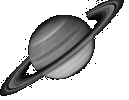
God & Science Forum Message | |
| Forums: |
Atm ·
Astrophotography ·
Blackholes ·
Blackholes2 ·
CCD ·
Celestron ·
Domes ·
Education
Eyepieces · Meade · Misc. · God and Science · SETI · Software · UFO · XEphem |

 |
|
 |
||||
|
|
||||||
Be the first pioneers to continue the Astronomy Discussions at our new Astronomy meeting place... The Space and Astronomy Agora |
| I Haven't Read The Article...
Forum List | Follow Ups | Post Message | Back to Thread Topics | In Response To Posted by Mark on October 17, 2001 15:20:42 UTC |
But I'm guessing that the reason this so-called habitatable zone exists, is probably because the inner galaxy is too dense with stars and intersteller space debris. I bet if our sun were, say, half the distance from the center of the galaxy as it currently is... chances are that the appropriately conditioned planets (size, composition, atmosphere, etc.) for harboring life could be hosted by a binary or even trinary star system. If we had two suns, there probably isn't too much worry of meteor impacts as a star would be a more effective "Jupiter Shield", however rogue asteroids would probably be the least of our worries since humans wouldn't have evolved under the intense radiation. Of course if we resided within the inner galaxy and had one host star, we would probably be bombarded with space debris impacts more often than now. Both scenarios are devastating to evolution... everytime you get a somewhat more complex organism, a meteor wipes it out; with two suns, I don't think complex organisms with large surface area could have emerged (heat is absorbed in proportion to surface area), because complex organic chemical reactions require strict temperatures to be sustained. These are just a few ideas...
|
|
| Additional Information |
|---|
| About Astronomy Net | Advertise on Astronomy Net | Contact & Comments | Privacy Policy |
|
Unless otherwise specified, web site content Copyright 1994-2025 John Huggins All Rights Reserved Forum posts are Copyright their authors as specified in the heading above the post. "dbHTML," "AstroGuide," "ASTRONOMY.NET" & "VA.NET" are trademarks of John Huggins |